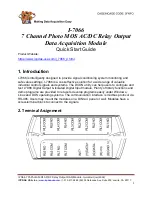
S7-400H
System Manual, 03/2012, A5E00267695-11
453
Differences between fault-tolerant systems and
standard systems
C
When configuring and programming a fault-tolerant automation system with fault-tolerant
CPUs, you must make allowances for a number of differences from the standard S7-400
CPUs. A fault-tolerant CPU has additional functions compared to a standard S7-400 CPU,
on the other hand it does not support specific functions. This has to be taken in account
particularly if you wish to run a program that was created for a standard S7-400 CPU on a
fault-tolerant CPU.
The ways in which the programming of fault-tolerant systems differs from that for standard
systems are summarized below. You will find further differences in appendix Stand-alone
operation (Page 447).
If you use any of the affected calls (OBs and SFCs) in your user program, you will need to
adapt your program accordingly.
Additional functions of fault-tolerant systems
Function
Additional programming
Redundancy error OBs
I/O redundancy error OB (OB 70)
CPU redundancy error OB (OB 72)
For detailed information, refer to the
System and Standard
Functions
Reference Manual.
CPU hardware fault
Depending on the configuration, OB 82 or OB 84 is also called if
the performance of the redundant link between the two CPUs is
reduced.
Additional information in OB start
information and in diagnostic
buffer entries
The rack number and the CPU (master/reserve) are specified.
You can evaluate this additional information in the program.
SFC for fault-tolerant systems
You can control processes in fault-tolerant systems using SFC 90
"H_CTRL".
Fault-tolerant communication
connections
Fault-tolerant connections are configured and do not require
further programming.
You can use the SFBs for configured connections when using
fault-tolerant connections.
Self-test
The self-test is performed automatically, no further programming
is required,
High-quality RAM test
The CPU performs a high-quality RAM test after an unbuffered
POWER ON.
Switched I/O
No additional programming required, see section Using single-
channel switched I/O (Page 173).
Reading type and serial number
of a synchronization module
How to read the serial number of a memory card.
















































